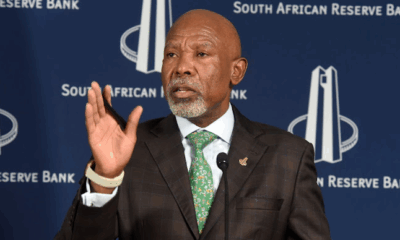News
291,000 Jobs Vanish: The Human Toll of SA’s Economic “Vicious Circle”

291,000 Jobs Vanish: The Human Toll of SA’s Economic “Vicious Circle”
The numbers are so vast they risk becoming abstract. But for the nearly 300,000 South Africans who joined the unemployment lines in the first three months of this year, the new data from Statistics South Africa is a devastatingly personal reality. The country’s jobs bloodbath is not slowing down; it’s accelerating.
The latest Quarterly Labour Force Survey reveals a staggering loss of 291,000 jobs in the first quarter of 2025. This isn’t just a statistic; it’s a seismic event that has pushed the official unemployment rate to 32.9%, meaning 8.2 million people are now actively looking for work and cannot find it.
But the true picture is even grimmer. The expanded unemployment rate, which includes those who have given up looking, has climbed to 42.9%. This means a staggering 25 million working-age South Africans are not in any form of employment. For the youth, the situation is catastrophic, with 46.1% of those aged 15-34 out of work.
The Sectors Bleeding Out
The pain was not felt equally. The formal sector, the bedrock of the economy, was decimated:
-
Trade: 194,000 jobs lost. The heart of commerce is faltering.
-
Construction: 119,000 jobs lost. A sign of stalled infrastructure and investment.
-
Mining: 35,000 jobs lost. A traditional powerhouse continues its decline.
-
Private Households: 68,000 domestic worker positions cut. A telling indicator of squeezed middle-class budgets.
While the informal sector added a slight 17,000 jobs, it’s a drop in the ocean compared to the tidal wave of losses elsewhere, highlighting a desperate shift towards survivalist entrepreneurship.
“No Light at the End of the Tunnel”: Why Companies Are Leaving
Economist Azar Jammine doesn’t mince words. He attributes this collapse to years of stagnant growth and a persistent failure to address deep-seated, structural problems.
“They don’t just leave after a bad year or two,” Jammine said, referring to the exodus of major companies. “But when there’s no light at the end of the tunnel, companies eventually decide it’s time to go.”
He points to a familiar litany of issues: government interference, excessive regulation, rampant crime, and failing municipalities. The result, he warns, is a “vicious circle, a downward spiral”: mass retrenchments lead to less consumer spending, which shrinks the tax base, placing even more strain on government services and finances.
This theory is playing out in real time. ArcelorMittal South Africa is winding down, risking 3,500 direct jobs and a further 100,000 in related industries. Ford South Africa is cutting 474 jobs. Goodyear closed its Kariega plant, resulting in 900 layoffs. These are not just corporate decisions; they are community-ending events.
Are Companies Following the Rules?
With retrenchments happening at scale, questions arise about fairness and procedure. According to Kenneth Coster, a partner at law firm Webber Wentzel, large companies are almost certainly complying with the strict laws governing mass layoffs.
“The risks of non-compliance are simply too great,” Coster explained. The process involves mandatory 60-day consultation periods and potential oversight from the CCMA. He notes that while unions can strike, such actions are “mostly ineffective” in stopping a retrenchment if a company can prove it is commercially justified.
The problem, Coster argues, isn’t the labour laws themselves. “The real issue lies in the economic environment created by government policies.”
A Government “Deeply Concerned” But Limited
Employment and Labour Minister Nomakhosazana Meth expressed deep concern for the families behind these numbers. In response, the government has leaned on relief schemes like the UIF’s TERS program.
They secured R416 million to assist ArcelorMittal workers, but the deal collapsed when the company could not promise to avoid retrenchments. The South African Post Office, however, did receive R381 million to support 6,000 employees.
The Presidential Youth Employment Initiative has also placed 140,000 young people in schools as assistants. But both Jammine and Coster see these as temporary stopgaps.
“Eventually the government will run out of money to keep funding temporary relief,” Jammine warned. The only real solution, they agree, is deep structural reform: fixing education, dismantling criminal syndicates that hamper business, and finally creating an environment where small businessesthe true engine of job creationcan not only survive but thrive.
For now, the spiral continues. Each job lost is a family pushed to the brink, and a nation grappling with the profound human cost of an economic crisis with no end in sight.
{Source: IOL}
Follow Joburg ETC on Facebook, Twitter , TikTok and Instagram
For more News in Johannesburg, visit joburgetc.com



























